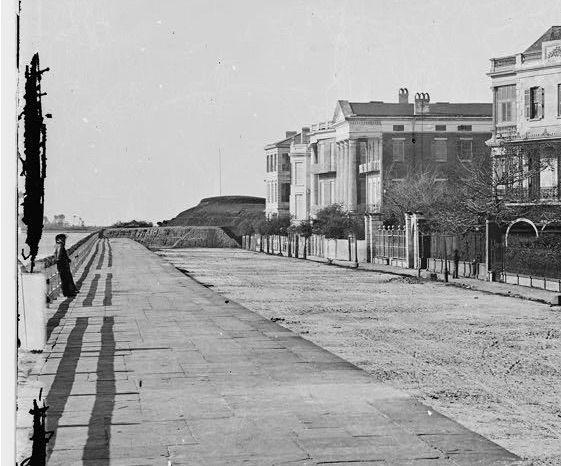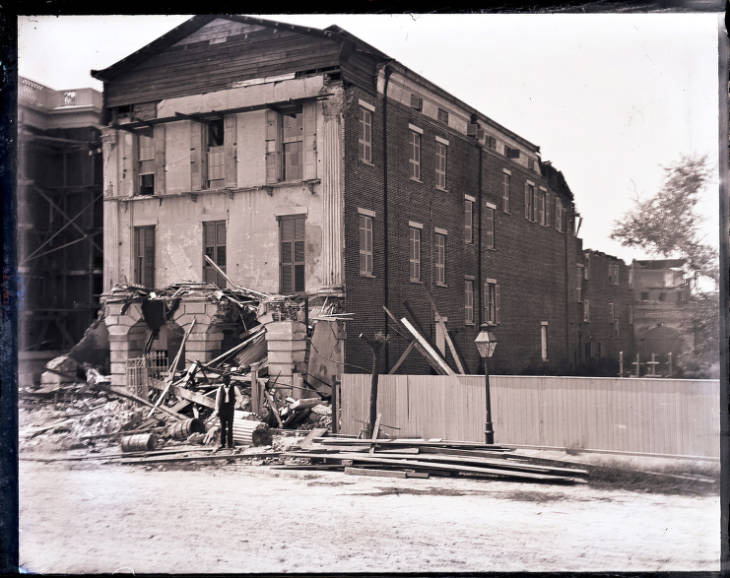WILLIAM RAVENEL HOUSE
13 East Battery, c. 1845
Completion of Charleston’s southeastern sea wall, known as High Battery, in 1819 allowed some of the Lowcountry’s most prominent families to build magnificent antebellum mansions along a new harbor-front street just south of the city’s original walled footprint. During the 1840s, a pair of brothers who had been successful in the shipping industry, John and William Ravenel, built fashionable neoclassical dwellings at 5 and 13 East Battery.
The younger brother, William, began working for Ravenel & Stevens shipping company when he was just 16, eventually becoming a partner. With his earnings, Ravenel had completed his mansion at 13 East Battery by 1845. He and his wife, Eliza Butler Pringle Ravenel, reared their 11 children there and at their Farmfield Plantation in St. Andrews Parish.
Ravenel cleverly designed his large house on a deep, narrow lot. The second-floor drawing room runs the entire width of the house and remains one of the largest residential rooms in Charleston. In her classic work, The Dwelling Houses of Charleston, Alice Ravenel Huger Smith describes the layout of the house, noting its long hall with a staircase to its right, a large dining room for entertaining, and narrow side rooms with folding doors that could open to create a larger space.
Yet the visual highlight of Ravenel’s house was its grand Greek Revival portico, with an arched base as high as the first floor. Above that, four giant order Tower of the Winds columns made of brownstone rose another two stories to support the roof. Family members recalled how much William Ravenel enjoyed looking out over High Battery from the portico and seeing his ships in the harbor.
It probably took less than two minutes, shortly before 10 p.m. on August 31, 1886, for those iconic columns to crumble into the street during the Great Earthquake, leaving only the base and protruding gable roof. They were never replaced.
William Ravenel passed away two years later, though his family continued to live in the house until the 1930s. In 1959, Hurricane Gracie uprooted a large tree in the yard, and to everyone’s surprise uncovered one of the grand capitals that had spent decades buried underneath. Today, throngs of tourists pass by the Ravenel House daily as they stroll along High Battery. Instinctively, even to an architectural novice, many of us sense that something seems amiss or off-kilter as they pass by the mansion, though few understand what exactly. Those who look carefully may see the rediscovered capital in the property’s garden, now not only a decorative element, but also a testament to the catastrophic damage caused by the largest earthquake to ever strike the east coast.




